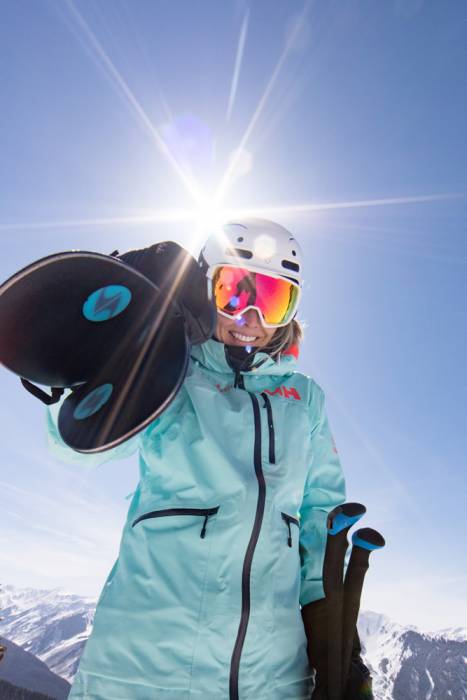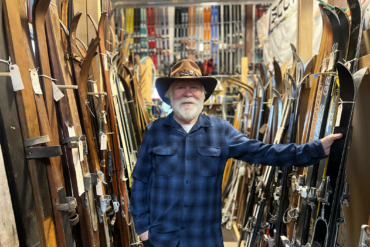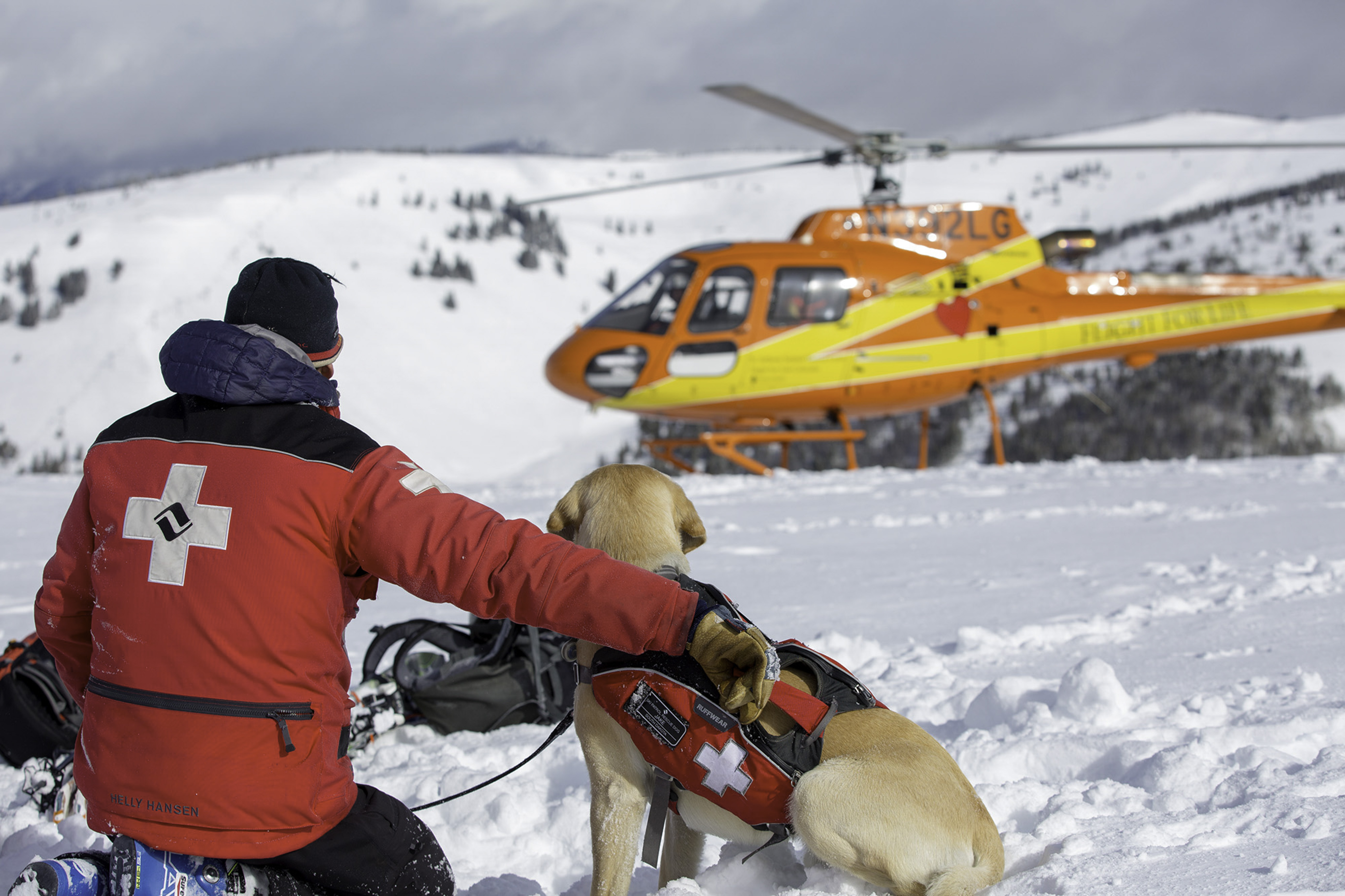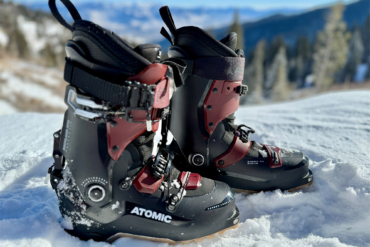Marketing says yes, hard-charging female skiers say no, but everyone agrees a softer, more playful ski has a place on the shop wall. And it’s too bad it’s always tagged for women.
“The ski doesn’t care which bathroom you use. It only responds to the energy coming from the skier,” said Mike Hattrup, veteran ski designer and Fischer alpine product manager. “We don’t need to make a difference where there isn’t one.”
Starting next season (winter 2020-2021), Fischer will strip skis of what Hattrup calls “marketing B.S.” And it will begin using the same construction in both men’s and women’s models. Only graphics will differentiate the two.
“Women’s skis are the embodiment of mansplaining,” said Louise Lintilhac, managing editor of Backcountry Magazine and former Freeride World Tour competitor.
“It doesn’t matter what gender you are, body type is body type. Your skiing ability isn’t gender-specific. We should be marketing to body weight and ability, not gender.”
So, do we even need women’s skis? And if so, should brands actually market them to women alone? I talked with brands and skied the goods to find out what’s up with purpose-built women’s skis.
Women’s Skis: The Anatomical Argument
Fisher’s position is that most differences between male and female skiers are manufactured.
Hattrup said, “If women’s physiology [in relation to skiing] was truly different, you would see different women’s and men’s skis on the World Cup,” he said. “The data isn’t there to support different skis or different mounting points.”
But most companies make women’s-specific skis, and many insist that’s what women should be skiing.
Leslie Baker-Brown — Blizzard-Tecnica global women’s program leader, three-time All-American skier, and the 1982 Giant Slalom national champion — took an opposing stand.
“Looking at women, we’re lighter, most of us are not as strong, and there are many women who will benefit from skiing women’s skis,” she said.
Baker-Brown believes that a woman’s anatomy does play a role in ski design and mounting. As such, Blizzard gears women’s skis toward females’ average weight, strength, and anatomy. “Our women’s skis are easier to ski and a little lighter than the men’s version,” Baker-Brown told us. “Which can be a more enjoyable experience. You don’t have to work as hard.”
She claims women carry their weight further back than men, and that because most women also have smaller feet than their male counterparts, moving the mounting point forward helps a female skier enter a turn more effectively. She even went so far as to acknowledge that lighter men could benefit from women’s skis, too.
Women’s Skis for Men?
In the case of the Blizzard Black Pearl, the top-selling ski in the U.S. for the past 3 years in any category, Blizzard built a ski that’s high-performance and easy to ski.
Seeing the success of that ski, and aware that men could benefit from the lighter, user-friendly construction, Blizzard created the Bushwhacker. With it, the brand took into account that not all men are self-confident enough to shred with their bros strapped into a “women’s” ski.
Sadly, it didn’t sell.
“I don’t know why,” Baker-Brown said. “Most men wanted a Bonafide or Brahma.”
Now, guys who want a softer-flexing Blizzard ski can have it — if they embrace the “women’s” Black Pearl ski.
Blizzard pro athlete Marcus Caston did. At a launch for Blizzard’s 2020-2021 skis, he told me he’s adding a Black Pearl in 177 to his quiver this year “just because I like it.”
Traveling with the Backcountry Magazine Backcountry Basecamp, Lintilhac saw a lot of men struggling to find skis and boots appropriate to a new skier.
“A lot of guys who are getting into backcountry skiing are being told they need a boot with 120 flex,” she said. “That’s too much boot for a new skier. They’d be better served with a lighter boot that allows them to get into the front of the flex.”
Often, lighter flexing boots aren’t available in bigger sizes, just like harder-charging skis aren’t available in shorter sizes.
“There are some cool skis I’d love to ski,” said Lintilhac, “but the smallest they come in is 184, and I am 5’1” so that’s not realistic.”
Do Women Need to Use Women’s Skis?
On the flipside, I have always struggled to find women’s skis with enough length for me to give them a proper test and energetic enough I like them more than the equivalent men’s ski.
I’m 5’7” with a 26.5 (men’s 9.5) boot, and I ski Northeastern hardpack (others call this ice) and some Front Range fluff. I’m not a competitive skier, but I’m a confident skier who puts 50-100 days in a year gliding on snow.
And I am female. So, should I be skiing a women’s ski, or not?
Skiing has been male-dominated possibly since its inception. And Blizzard and other brands have worked hard to invite women to the slopes. Baker-Brown was just promoted to head the brand’s Women 2 Women program, which helps educate and empower women skiers.
Gear made specifically for women felt like another way for brands to tell us we’re invited to play, too.
Lintilhac conceded she sees the benefit of easier-skiing, entry-level women’s gear marketed to a beginner demographic. “It provides less of a barrier to entry,” she told me. “It welcomes women to the sport.”
But, she added that too often, telling women they need women’s gear is also a hindrance and disservice: “If you enter the market thinking you must ski a women’s ski, you might never try gear that will let you progress your skiing ability.”
Historically, most women’s skis have been for beginner and intermediate skiers, and there haven’t been great options for hard-charging, ambitious, accomplished skiers.
The standard brand response was, “high-level women skiers just ski the men’s skis.” I found that confusing. If you’re going to tell women that we need gender-appropriate gear, then you need to offer a range of options for women of all shapes, sizes, and abilities. And you need skis that manage all the kinds of terrain skiers tackle, from big-mountain descents to blue squares at the resort.
Brands need to give women the gear to progress and realize our snow sliding dreams. Otherwise, the messaging doesn’t make sense. If there is a legitimate reason why women should ski women’s skis, then I want one that’s made for me.
“Women’s skis have been our way to keep you girls down,” Hattrup, Fischer’s product manager, joked. I didn’t laugh, because I’m not sure it is a joke.
Women’s Skis Done Right
The good news is that for the first time, there are a lot of good women’s skis. And there are a lot of “women’s skis” that are just the same as the men’s.
I asked Baker-Brown if there are height or weight guidelines for Blizzard skis. There aren’t.
She agreed that the right ski for any skier will be based on that skier’s weight plus ability plus strength, combined with where they ski. “I’m not saying all women should buy women’s skis, but the majority of women would have a better experience on women’s skis,” she said.
Baker-Brown also acknowledged that some women’s skis are too light. They can’t cut through the crud or help skiers feel stable. In fact, next season, Blizzard will make its best-selling Black Pearl heavier to give it better bite in variable conditions.
Kudos to brands for rethinking how to make skis fun and hard-charging but also inviting. These are skis that lighter people can flex that also build skill and confidence.
And, most importantly, the incentive is there across brands to keep making women’s skis, whether those skis are the same construction in different colors or different construction skis. The issue surrounds retail wall space: Most shops have a dedicated display for women’s ski models. So if Fischer didn’t have a “women’s” graphic, it would likely lose its space on that wall.
Gender-Specific Skis: Where We Stand
In general, today’s women’s skis don’t fall into the shrink-it-and-pink-it ethos. Women’s skis from many (if not most) brands receive the same development time and resources as men’s. Baker-Brown said Blizzard designers spent the same time building the Black Pearl 97 as they did the Bonafide 97, and sales numbers show that what they’re doing is working.
But for many brands, women’s skis sit somewhere between a market-driven afterthought and a confusing but necessary offering.
While Blizzard has a clear and well-articulated approach to women’s skis, at least half a dozen brand representatives from my reporting were unable to tell me if their brand believes men’s and women’s physiologies warranted gender-specific skis and why, what their brand’s approach to women’s skis was, and how that’s different from the way they build men’s skis.
On the flipside, I stopped at the Rocky Mountain Underground booth at a recent demo and personally witnessed multiple men asking the brand to please make the women’s Valhalla Wood Core in longer lengths so they could ski it.
Hattrup said the only difference Fischer sees between men and women is that women prefer different colors and graphics. But when Fischer introduced its hot-pink women’s Ranger 102FR, dudes wanted it, too. So for 2020-2021, the brand will sell the pink ski in 153cm to 191cm. The only skis Fischer will sell with “women’s construction” are in the intermediate category.
At a recent demo day for next year’s skis, I skied some of the best women’s skis I’ve tested in the past 20 years and found a couple I’d consider owning. That was encouraging. Although one brand rep told me she wanted to ski her client’s men’s ski, but that she’d be fired if she didn’t ski the women’s offering.
So, do women need women’s skis? No. But if you’re lighter or want a ski you can dance on, not a ski you always need to drive with your hip to the snow, don’t rule them out.
And, if you’re 5’1” and you want something powerful and short enough you can slay whatever slope you’re on, keep making a lot of noise. It seems that brands are finally listening.










